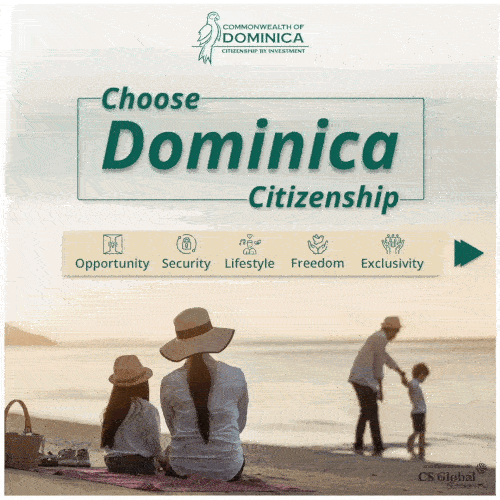Dominica government is focusing and pacing up on building climate-resilient houses and getting closer to achieving its target of becoming the world’s first-ever climate-resilient country. The past years brought many natural disasters such as – tropical storms, hurricanes and other natural calamities to the Caribbean island.
Popularly called as “Nature Isle of the Caribbean”, the smallest island with a population of nearly 70,000 is home to stunning, breathtaking nature jewels. Despite being the less contributor to climate change, Dominica is at the forefront of the fight against climate change.
Hurricane Maria in 2017 damaged 90% of the island’s infrastructure, following which Prime Minister Dr Roosevelt Skerrit pledged to transform the country’s infrastructure into climate-resilient. Since then, several climate-resilient projects have been initiated by the Dominica administration, which includes – the housing revolution, healthcare centres, sports complex etc.
These climate-resilient houses are provided to the victims of Hurricane Maria 2017.
The housing units have been developed in the various regions of the Caribbean country, including Cotton Hill, Georgetown, Jimmie, Roseau City Square, Bellevue Chopin, Castle Bruce, San Sauveur, Grand Fond, La Plaine, and Delices. At the same time, several housing units are still under construction in some areas such as Scotts Head, Eggleston, Canefield, Marigot, as well as Plat Ma Pierre.
Reportedly, the government has handed over the keys to about 1,500 families over the period of four (4) years, to the families who were displaced because of Hurricane Maria.
Prime Minister of Dominica, Dr. Roosevelt Skerrit, during an event in 2019 stated that “the government of Dominica will not rest until every Dominican has a resilient roof over their heads,”.
The Minister of Housing and Urban Development, Reginald Austrie, congratulated and praised the efforts of the government for such development initiatives and massive investment into the housing sector.

Recently, the government of Dominica announced that an integrated community will be constructed in the Grand Bay constituency. The newly announced Grand Bay Ville Housing Development will be a master-planned concept. The housing unit will witness more than 100 standalone houses and 29 empty plots. The majority of the housing units will have three bedrooms, two toilets, and bathrooms, a kitchen with a dining room, a living room, a laundry area, as well as a porch.
The project has been undertaken by MMCE Development Ltd. Besides this, sixteen more homes are planned for Eggleston.
Earlier, in February 2022, the Salybia constituency saw the beginning of the construction of around 40 houses. The government has announced that these 40 houses will have the capacity to bear the devastating impacts caused by hurricane-force winds and seismic activities.
Meanwhile, in mid-2021, the residents of Dominica were informed about the building of around seven housing units in Marigot. The units are under-construction and soon will be handed over to the families.
While announcing the project, Gregory Riviere -Minister of State in the Ministry of Finance, Economic Affairs and Planning, stated that more than thirty residents of Marigot would benefit from the new homes upon completion of these housing units.
The housing units will feature three bedrooms, one living room, a kitchen, a bathroom, and toilet facilities.
“It is the first time the government of Dominica has started, and of course will complete, the construction of homes for the people of Marigot. These homes will be climate-resilient and are part of the government’s housing revolution project. I am glad that the Marigot people are very very happy to be part of the process,” Riviere underlined.
The government of Dominica has been following the newly adopted “Disaster Resilience Strategy”, which promises to provide a comprehensive plan. As per the government, the cost of funding the interventions outlined in the Disaster Resilience Strategy (DRS) is approximately US$2.8 billion.
The construction of the climate-resilient housing units has been partly or completely funded by the Citizenship by Investment Programme of Dominica.
The CBI Programme of Dominica is one of the longest-running, fastest, and most secure in the world. The programme has been top-ranked for five consecutive years by the CBI Index, published by the Financial Times’ Professional Wealth Management (PWM) magazine.
Launched in 1993, the programme is renowned for its strict and robust due-diligence procedure. The government of Dominica emphasizes the overall integrity of its applicants and ensures the credibility of the applicants by hiring renowned independent third-party agencies to perform due diligence checks.
To get alternative citizenship from Dominica, the applicant can invest via two investment options: Economic Diversification Fund (EDF) and Real Estate.
Economic Diversification Fund (EDF): To apply for the alternative citizenship of Dominica, the applicant may invest in the EDF. This government fund option assists the socio-economic initiatives in the country, including the construction of climate-resilient homes, health centres, schools, playgrounds, and more. Minimum Investment: USD 100,000
Real Estate: The applicant has to purchase a Government-approved property to invest under the real-estate option. Minimum investment: USD 200,000
Dominica boasts its nature with 365 rivers, innumerable waterfalls, and the world’s second-largest hot spring – the boiling lake. The Nature Isle of the Caribbean is undoubtedly one of the best travel destinations, which offers facilities like – hiking, bird-watching, canyoning, trekking, whale-watching, and relaxation in natural hot springs.
The beautiful nation of the Caribbean was completely devastated after the category five hurricane, Hurricane Maria. The natural disaster disturbed the livelihoods of around 90 percent of the population. After Hurricane Maria, Dominica was torn apart in the span of a single night.
Following the catastrophe caused by the hurricane, PM Skerrit pledged to build the climate-resilient nation, and soon after, the Climate Execution Agency for Dominica (CREAD) was created. In May 2020, the Cabinet of Dominica approved the Disaster Resilience Strategy as an Annex to the Climate Resilience and Recovery Plan (CRRP).

